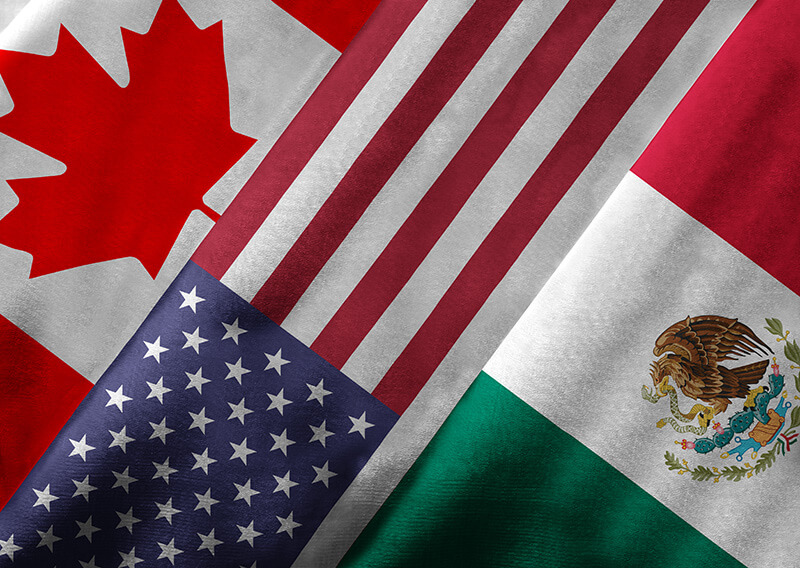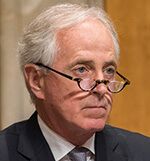 The sigh of relief from the automotive sector at the announcement of a breakthrough in negotiations over the North American Free Trade Agreement (Nafta) with Mexico in August was almost palpable. The news at the end of September that a similar, last-minute deal had also been struck with Canada must have been of even greater relief.
The sigh of relief from the automotive sector at the announcement of a breakthrough in negotiations over the North American Free Trade Agreement (Nafta) with Mexico in August was almost palpable. The news at the end of September that a similar, last-minute deal had also been struck with Canada must have been of even greater relief.
It came, after all, more than 16 months after US trade representative Robert Lighthizer originally notified Congress of the Trump administration’s intention to renegotiate the two-decade-plus old pact, and multiple threats by the US along the way to impose punitive tariffs on imported vehicles or those made in the US from large quantities of imported parts, in order to protect American jobs and investment.
Just a few days before the Canadian deal was agreed, US president Donald Trump had indicated that talks with Canada were fast approaching a meltdown, confirming that he had recently rejected a proposed one-to-one with Canadian Prime Minister Justin Trudeau “because his tariffs are too high and he doesn’t seem to want to move”, and adding: “Frankly, we are just thinking about taxing cars coming in from Canada… We are very unhappy with the negotiations and the negotiating style of Canada.”
By Monday, October 1, however, everything had changed, as President Trump announced via social media that a new United States-Mexico-Canada Agreement (USMCA) had been struck, describing it as “a great deal for all three countries [that] solves the many deficiencies and mistakes in Nafta”.
Speaking later at the White House, Trump – who had threatened to leave Canada out of the new deal signed previously with Mexico – hailed the USMCA as “the biggest trade deal in the United States’ history” and said it would support “hundreds of thousands [of] American jobs”.
Canadian Prime Minister Justin Trudeau admitted that some compromises had been made, but said the deal was “profoundly beneficial” to Canadians, adding: “Today is a good day for Canada”.
Commenting at the time of Mexico’s agreement with the US, meanwhile, Mexico’s outgoing president, Enrique Peña Nieto, said the development would be very positive for both countries.

Details of the dealThe USMCA, which covers a total of around $1.1 trillion in annual trade between the three countries, includes a number of measures specifically for the automotive industry. Perhaps most importantly, it calls for 75% of the content (by value) of vehicles assembled in the region to be from the USMCA area, if they are to avoid import tariffs – an increase from the previous 62.5% under Nafta. The deal also requires 40-45% of vehicle content to be made by workers earning the equivalent of at least $16/hour.
The deal further provides exemptions for Mexico and Canada from tariffs the US may begin imposing on global automotive imports more generally, providing each country with exemption on 2.6m passenger vehicles a year as well as light trucks. On top of that, Canada gets an exemption from tariffs on up to $32.4 billion worth of automotive parts, while Mexico’s parts exemption runs to $108 billion worth of parts.
It is expected that the new deal, lasting for 16 years at a time and to be reviewed after six years, will be signed by the three countries next month before being put forward to Congress for ratification. It is not clear how easy it will be to get that ratification – especially given the changes in the make-up of Congress that could result from the looming mid-term elections – but in principle, the long stretch of negotiation over Nafta has now come to a successful end.
That sounds like very good news, of course, but as pointed out by Kristin Dziczek, vice-president at the Center For Automotive Research, who oversees industry, labour and economics for the independent, non-profit research organisation, while a bullet may well have been dodged, there are still some important unknowns. “There are still a lot more hoops to jump through to have conforming vehicles under this agreement. There’s also the cost of compliance and documenting that you have met all the rules. That process may prove to be an ordeal and cost some money,” she notes.
Continuing threatDespite the new agreement, there is still the prospect of additional tariffs being imposed by the Trump administration on global vehicle and parts imports. Under Section 232 of the Trade Expansion Act of 1962, the president of the US can impose tariffs or other measures if the Commerce Department finds via an investigation that certain imports threaten American national security.
Earlier this year, following just such an investigation by the Commerce Department, the Trump administration levied a 25% tariff on imports of steel and a 10% tariff on aluminum imports. These tariffs continue to apply globally, including to Canada and Mexico, and are costing carmakers dearly. Ford recently suggested it would take a $1 billion hit to its profits as a result of these tariffs, for example, which suggests a cost of around $400 per vehicle.
In May, US secretary of commerce Wilbur Ross initiated a separate investigation by the Department of Commerce to determine whether import of finished vehicles and automotive parts into the US threatened to impair national security. According to Dziczek, the results of the inquiry into the automotive industry will be announced at some point this autumn.
 "There are still a lot more hoops to jump through… There’s also the cost of compliance and documenting that you have met all the rules. That process may prove to be an ordeal and cost some money." - Kristin Dziczek, Center For Automotive Research
"There are still a lot more hoops to jump through… There’s also the cost of compliance and documenting that you have met all the rules. That process may prove to be an ordeal and cost some money." - Kristin Dziczek, Center For Automotive Research
Side letters to the new US agreement with Mexico and Canada do exempt their automotive exports to the US at the levels noted above – and Dzicek says these side letters sought specifically to address circumstances in which vehicles do not meet certain guidelines, including the requirement that 75% of the vehicle be produced in the North American region.
But the side letters do not apparently afford protection to any vehicles or parts over and above the levels specified, and in any case, as the letters themselves point out, modifications to the quantities outlined may be discussed by the parties to the agreement “due to changes in production, capacity or trade” – a rather vague set of criteria that seems to open the door to a possible shift in the numbers.
Furthermore, while Mexico and Canada are exempt from Section 232 tariffs up to the specified limits, vehicles and parts from outside the USMCA area, such as those from the EU and Japan, might still face them. These two areas, among others, are big sources of content in some of the vehicles sold in the US (see table below).
If the Commerce Department’s Section 232 investigation concludes that automotive imports of vehicles and components do indeed pose a threat to national security, President Trump would have the authority to impose sizeable tariffs. It is not yet clear how these would be calculated and whether they would apply to the entire vehicle or just to non-USMCA parts, but according to some estimates, they could amount to 25% of the total vehicle cost.
[mpu_ad]Gauging the impactThe Alliance of Automobile Manufacturers reacted strongly to this prospect prior to the emergence of the USMCA deal, suggesting it would have a devastating effect on producers, vehicle sales and jobs in the automotive sector as well as the wider economy. A 25% tariff would add an average of $5,800 to the price of an imported car in the US, as well as $2,000 to the price of a US-built one, it suggested – leaving US consumers with a total bill of $83 billion. Its calculations were made prior to the emergence of the USMCA deal, however, with its exemptions from Section 232 tariffs for Mexico and Canada.
Still, there is a large collection of foreign-based OEMs with US plant operations that produce popular models which exceed current limits on non-Nafta content. And the implications of manufacturing a vehicle in the US with more non-Nafta/USMCA content than is permitted could go far beyond higher vehicle prices in North America itself, if 232 tariffs were applicable. It could also make US vehicle exports less competitive on the global market, Dziczek points out, adding that 30-40% of Mercedes Benz and BMW production in the south is currently exported out of the US, for example.
Given all this, Section 232 tariffs could still prompt substantial changes across the supply chain, it seems – up to and including shifts in production sites. OEM assembly plants tend to involve an investment of around $1 billion and have a projected lifespan of many decades, and in the case of many vehicles, it is larger components from non-USMCA areas, like engines and transmissions, that force them over the limits, making them potentially vulnerable to tariffs. While less expensive than building an entire car plant, the construction of engine and transmission manufacturing facilities is still a costly prospect. And any thoughts of shifting production of such components to an existing USMCA-based facility will probably be stymied by the fact that most existing engine and transmission production facilities are currently operating at or near their capacity levels and cannot handle any significant increase, says Dziczek.
 Click to enlarge
Click to enlargeAutomotive Logistics contacted a number of OEMs, tier suppliers and logistics providers prior to the Canadian agreement for their thoughts on all this, but none of them was willing to comment while the negotiations were still ongoing.
The role of politicsPolitics, of course, will continue to play a major role in this situation. Trade policies, as Trump himself has amply demonstrated, can change with the presidential administration in the White House – and the next US presidential election will place in 2020.
“That’s the bet. How long does any of this stay in place?” asks Dziczek.
Political moves are also afoot in the US to ensure that President Trump cannot simply impose Section 232 tariffs without the approval of Congress.
Senator Bob Corker – chairman of the Senate Foreign Relations Committee and a Tennessee Republican who participated in the successful effort to bring Volkswagen’s North American production plant to Chattanooga, among other things – was one of a number of US senators seeking in June this year to introduce new legislation that would force the president to get Congress’s approval on any new Section 232 tariffs, and reportedly also on any Section 232 actions taken in the past two years.
In response to questions from Automotive Logistics prior to the announcement of the Canada agreement about possible impacts of Section 232 tariffs on foreign-based OEMs in the US, including VW and Nissan, Corker said: “We have not seen any of the details at this point, so we can’t speculate. But there continues to be serious bipartisan concern over the abuse of Section 232 tariffs, which is causing damage across the country and threatens the auto sector that is so important to Tennessee. If an acceptable Nafta deal is achieved and those tariffs stay in place, it is still very problematic."
 "There continues to be serious bipartisan concern over the abuse of Section 232 tariffs, which is causing damage across the country… If an acceptable Nafta deal is achieved and those tariffs stay in place, it is still very problematic." - Bob Corker, US senator
"There continues to be serious bipartisan concern over the abuse of Section 232 tariffs, which is causing damage across the country… If an acceptable Nafta deal is achieved and those tariffs stay in place, it is still very problematic." - Bob Corker, US senator
Not everyone believes such tariffs are really a possibility, however. Noël Perry, founder of the Transportation Futures consultancy and a long-time transport economist, does not see the Trump administration levying Section 232 tariffs, even if the Commerce Department finds that there is a national security threat related to automotive imports. He says Section 232 tariffs would not only increase expense and cause disruption to the supply chain, but could also damage the health of the overall US economy. And addressing Nafta, adds Perry, has been the primary goal of the Trump administration.
“Trump has wanted to declare victory with Nafta and deliver on a campaign promise,” he says. “He’s already achieved that goal. I don’t think we will see [automotive] tariffs.”
Ultimately, of course, only the findings of the Commerce Department’s investigation and President Trump’s reaction to them will decide.
Automotive Logistics has contacted the US Department of Commerce to see how its Section 232 investigation is progressing, whether the new USMCA deal affects its course in any way and when it expects to announce its findings. As this article was published, however, it had yet to respond.
Whatever the outcome, it does at least seem that there will soon be more certainty around the trading conditions facing the North American automotive sector, now that the long road of Nafta renegotiations is at an end – as long, that is, as the new USMCA is ratified by Congress in a few weeks’ time.
 Requirement for 40-45% of content to be made by workers on at least $16/hour should help the US get its 'fair share' of volume, says Ross
Requirement for 40-45% of content to be made by workers on at least $16/hour should help the US get its 'fair share' of volume, says RossSpeaking to the Fox Business network after the USMCA announcement, US commerce secretary Wilbur Ross said it was “a huge deal”, adding that ”it clearly vindicates President Trump’s trade policies because this is fundamental reform”.
Commenting on the increase in the requirement for locally produced automotive content from 62.5% under Nafta to 75% in the USMCA, Ross suggested the change was bigger than the figures alone suggested.
“While they had a nominal 62.5% requirement for auto content to be produced within the Nafta region, it was specific to individual parts, many of which are not even in use any more. And parts that weren’t laid out in the Nafta agreement were deemed to have been made within Nafta, even though for the most part they were not,” he explained. “This new agreement updates the list and the list will be revised frequently.”
Ross went on to suggest that European and Asian nations, in particular, would feel the effects. “This new arrangement by itself is going to be somewhat expensive to both Europe and Asia, because those parts that were not covered under old Nafta were being brought in from outside – mainly Asia and Europe,” he said.
He also confirmed that the new requirement for 40-45% of the total content in vehicles to be produced at wages of more than $16/hour was “meant to ensure that the US gets its fair share of the volume brought back into Nafta”.
“Nafta had permitted too much volume coming in from the outside. So this will benefit the auto parts industries in the US, Canada and Mexico – mostly the US. And it will be tens of billions of dollars in total,” he suggested.

























![Global[1]](https://d3n5uof8vony13.cloudfront.net/Pictures/web/a/d/s/global1_726550.svgz)









